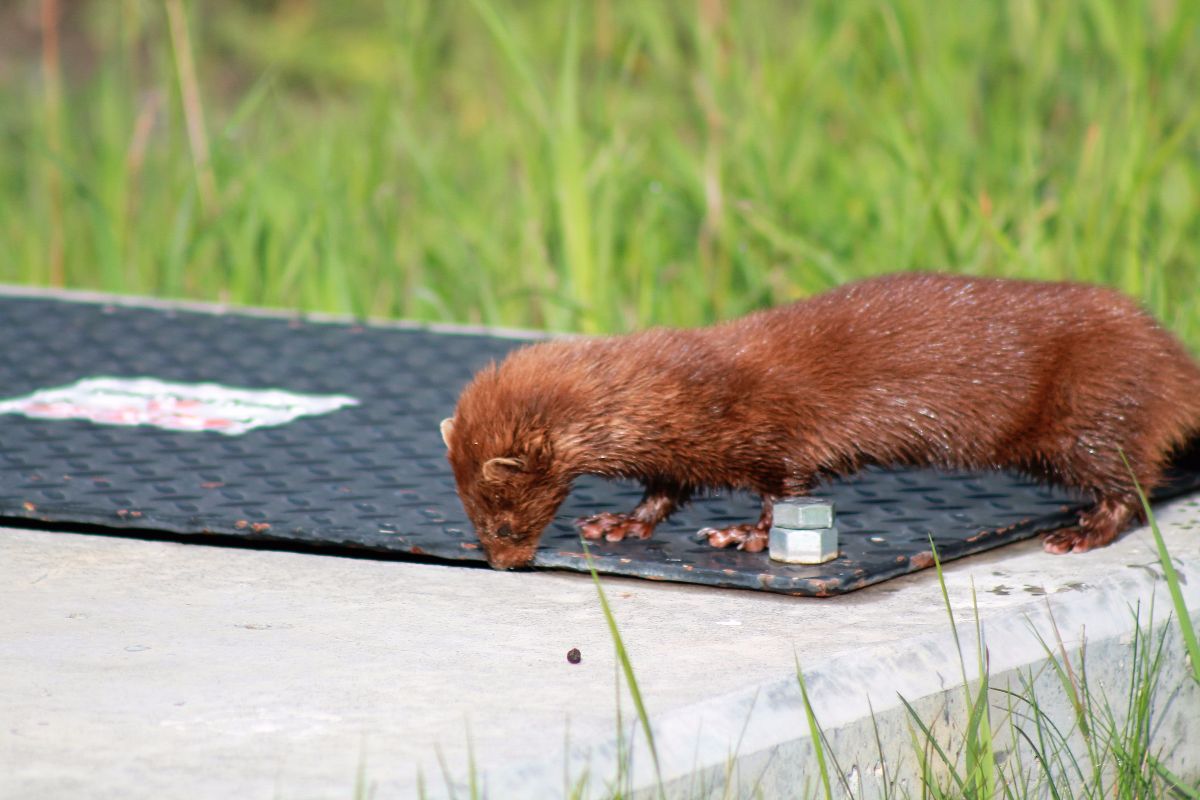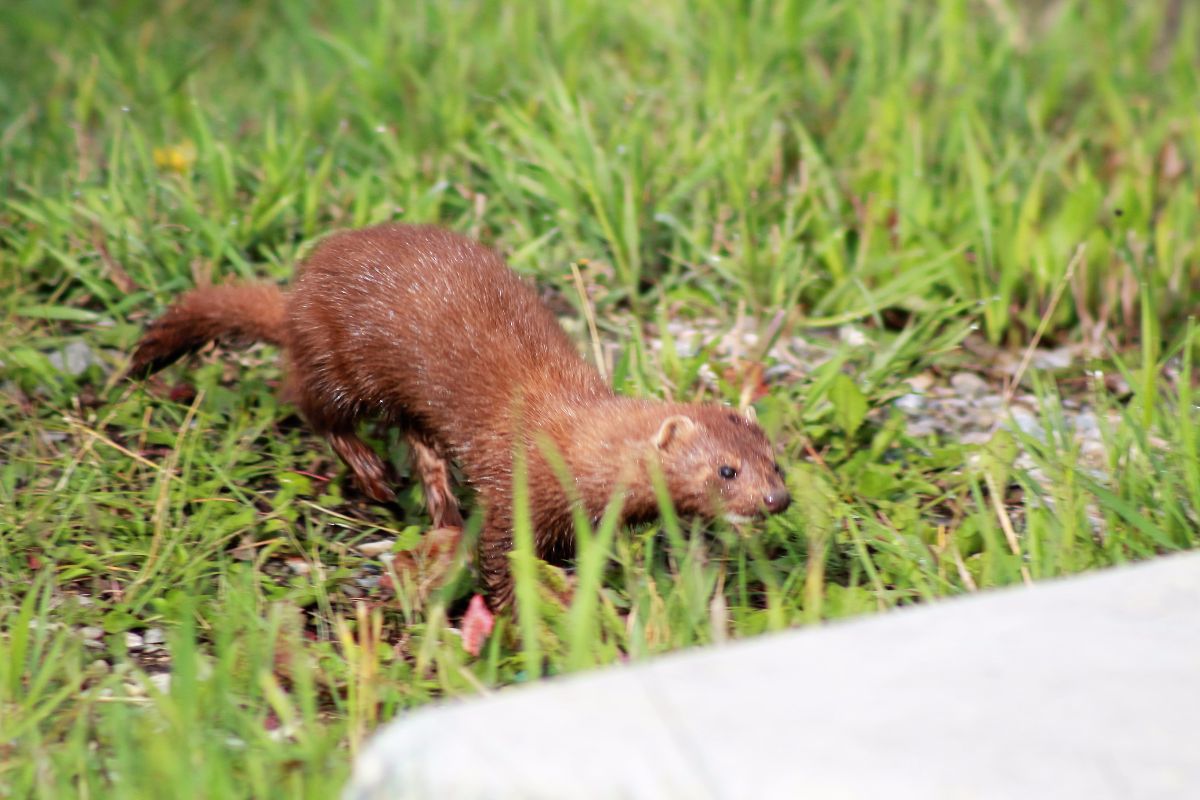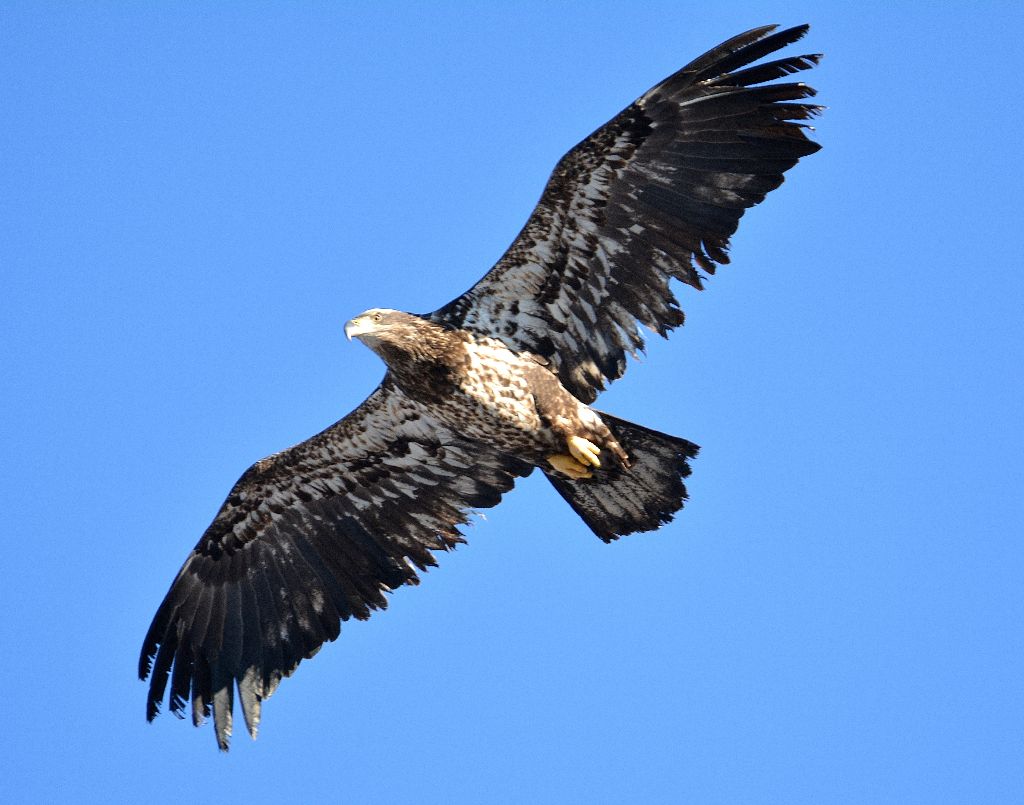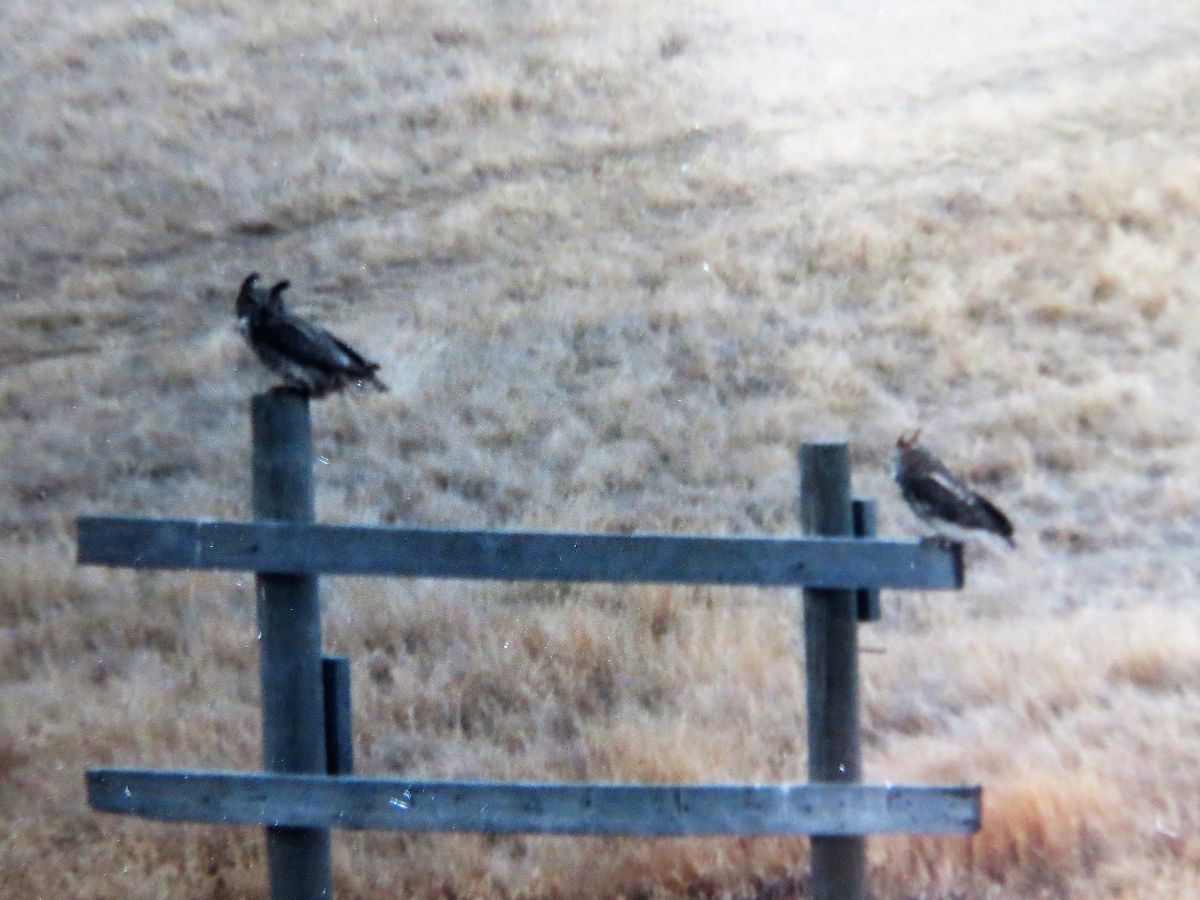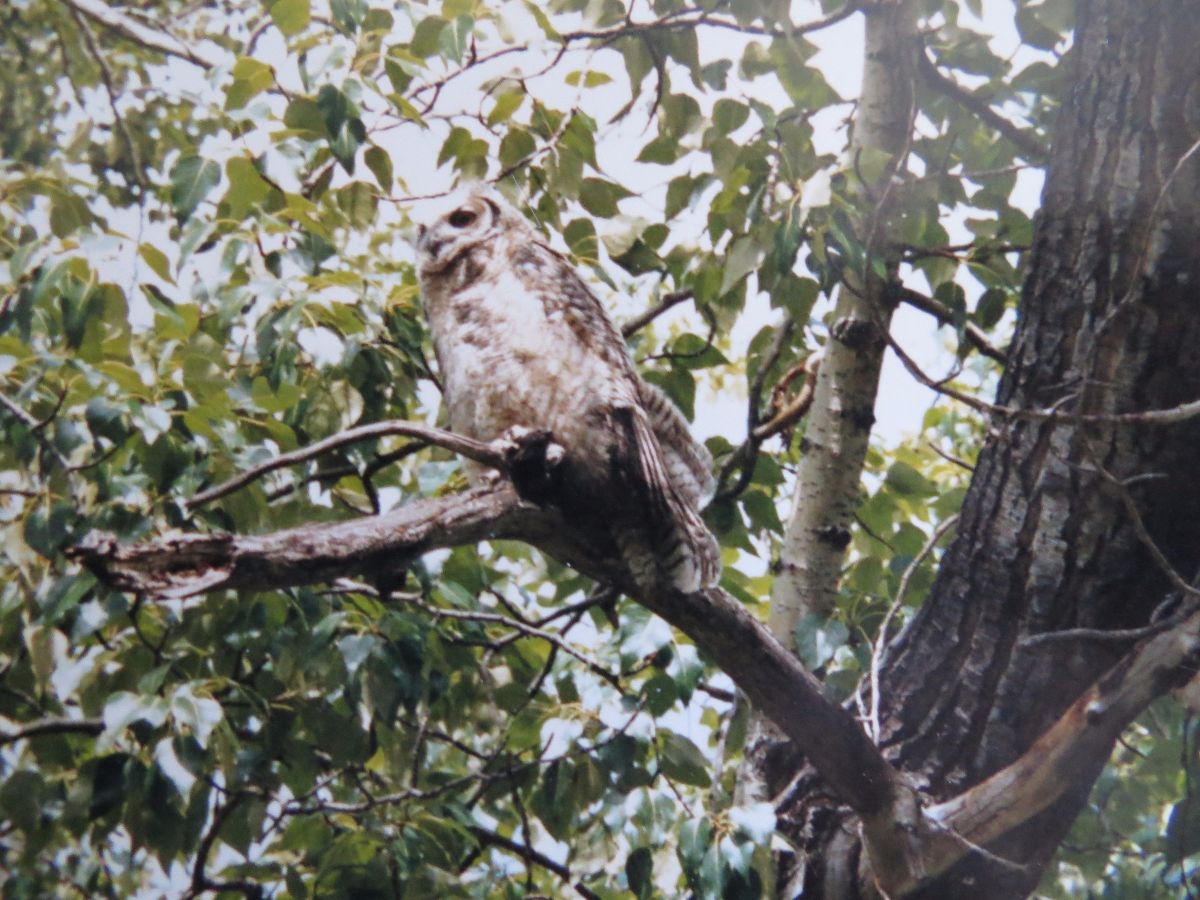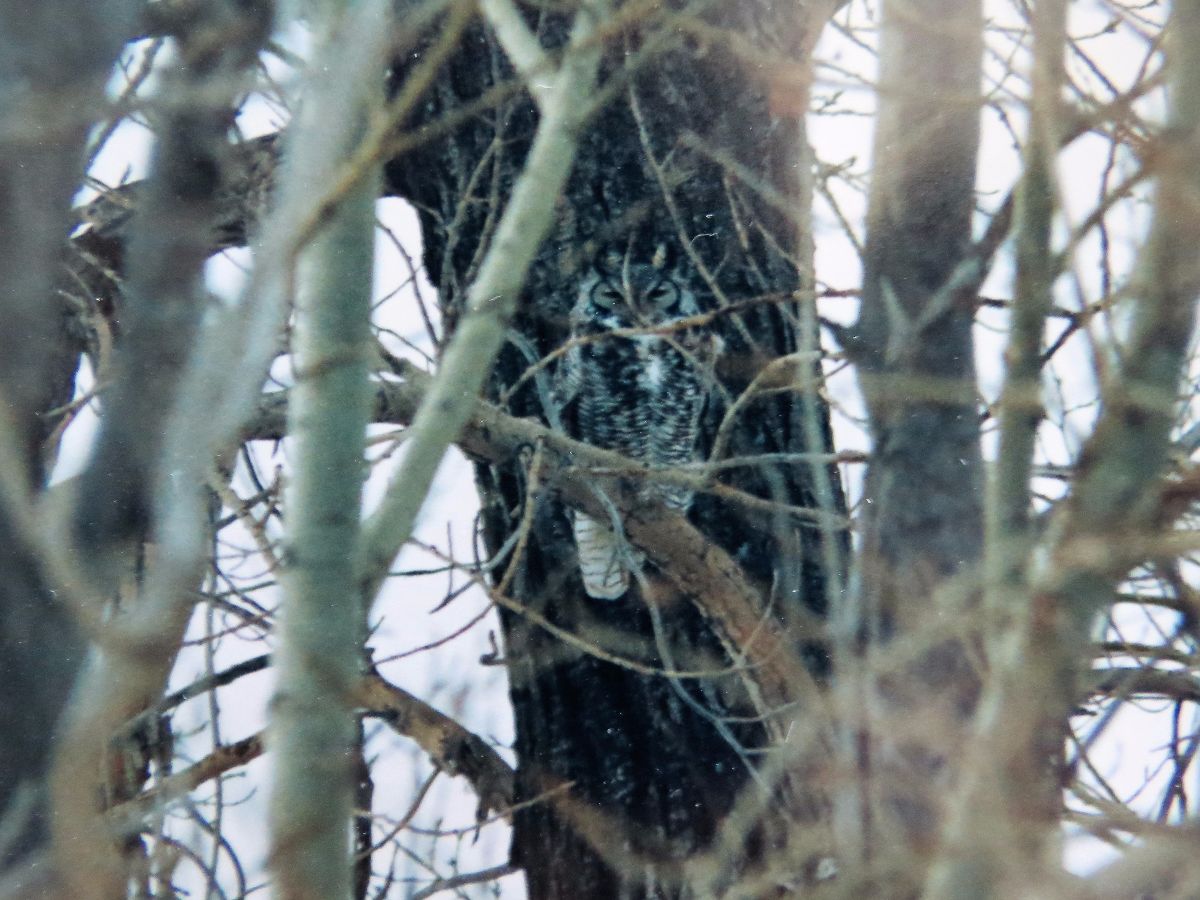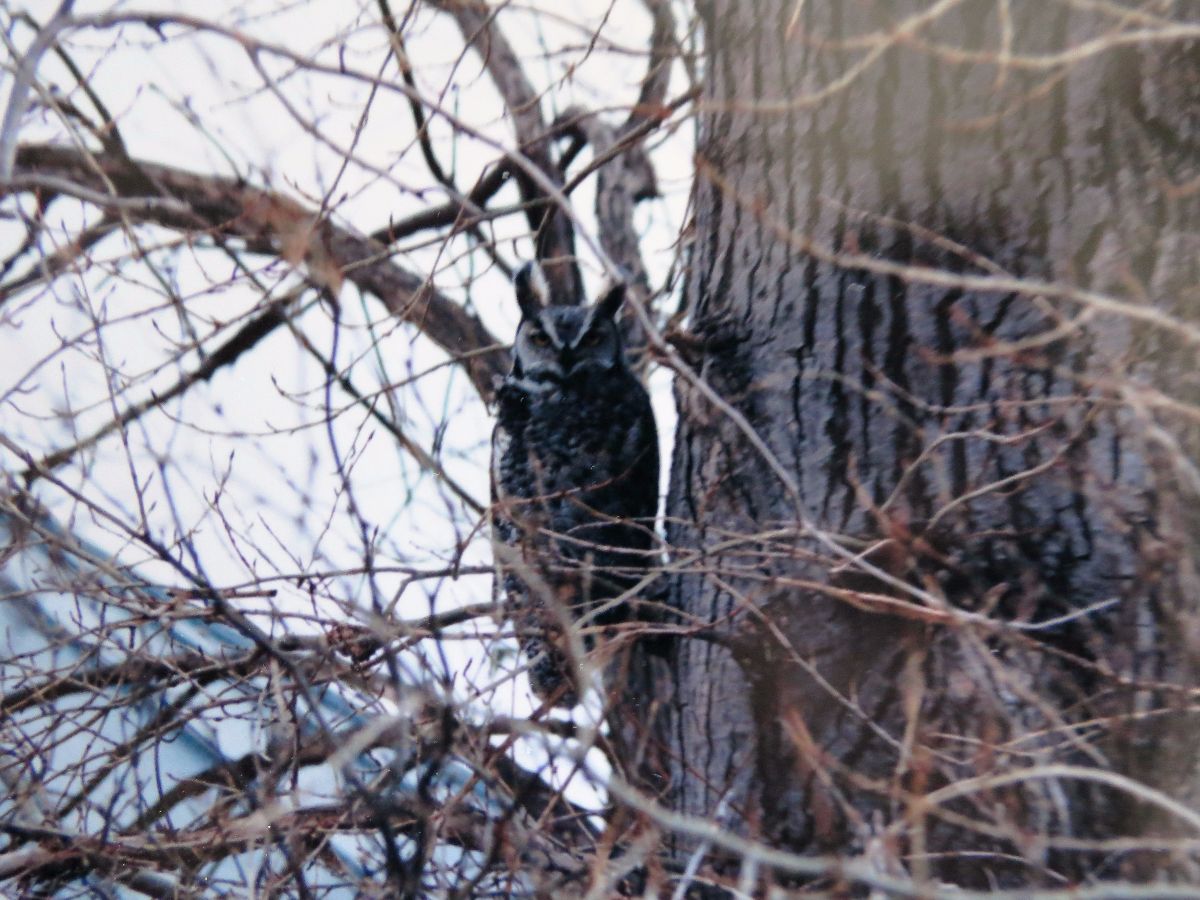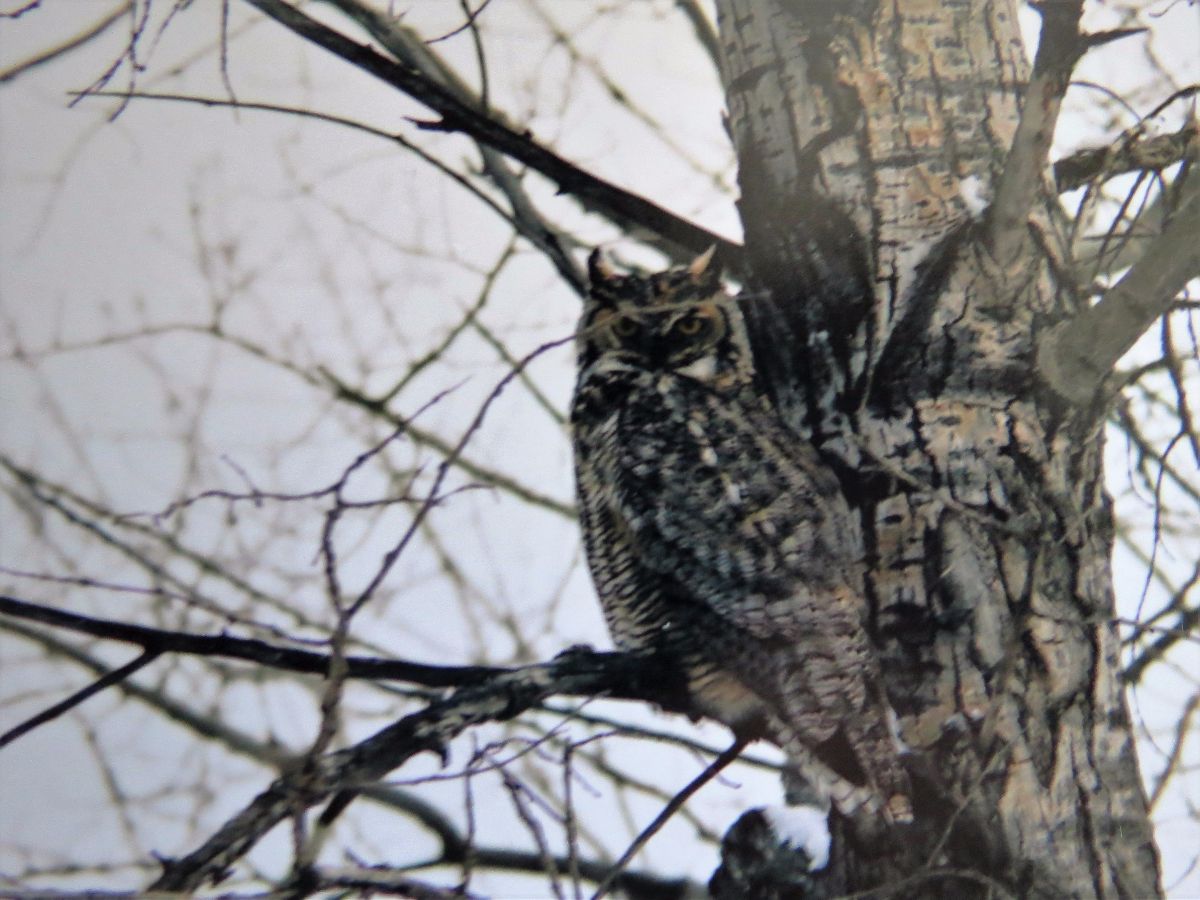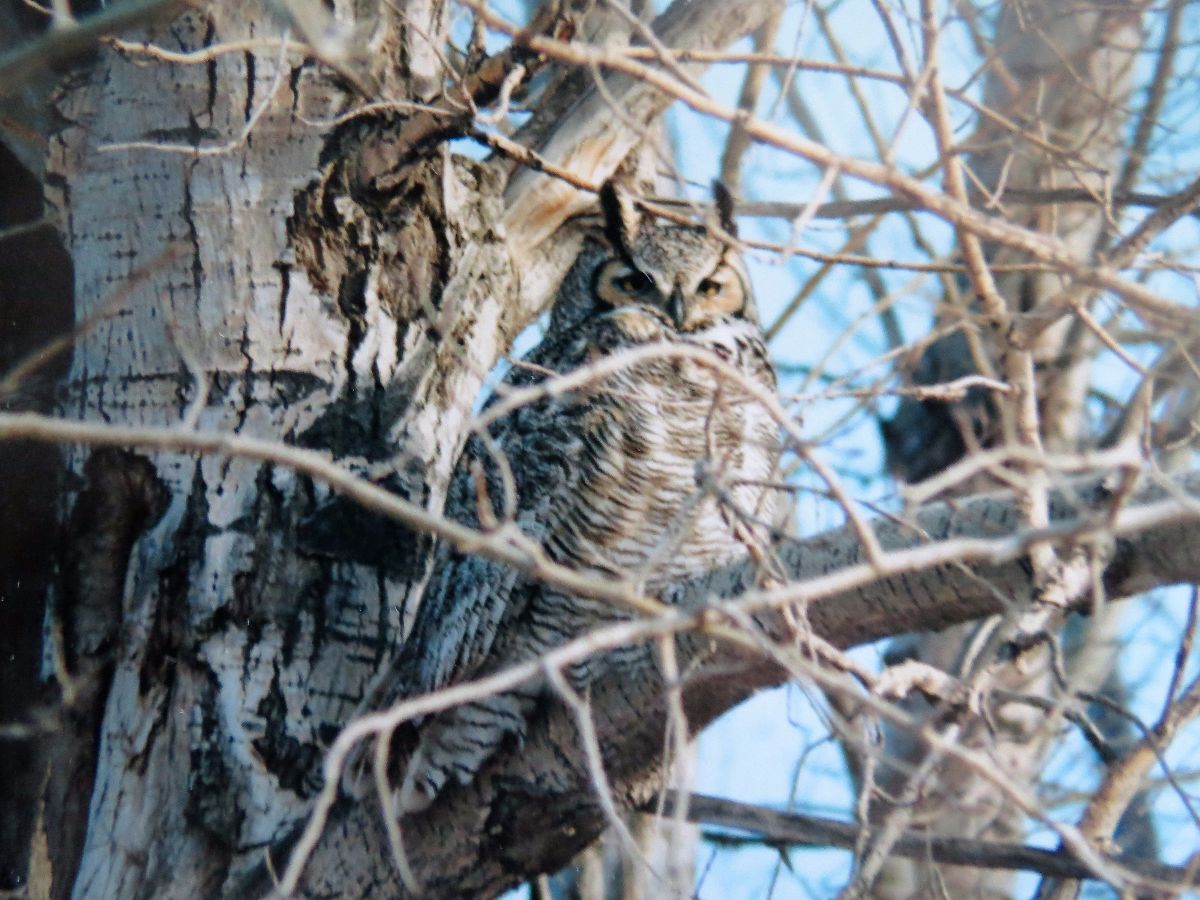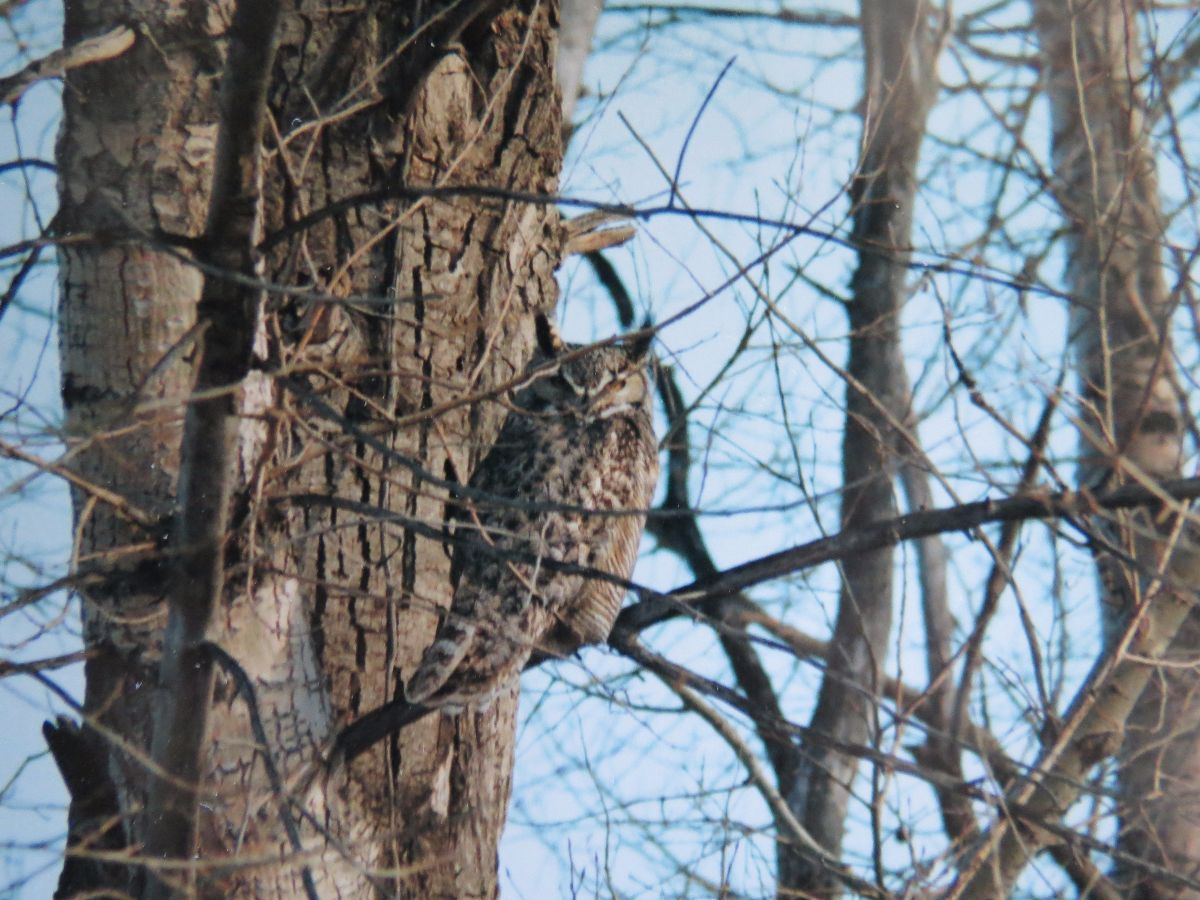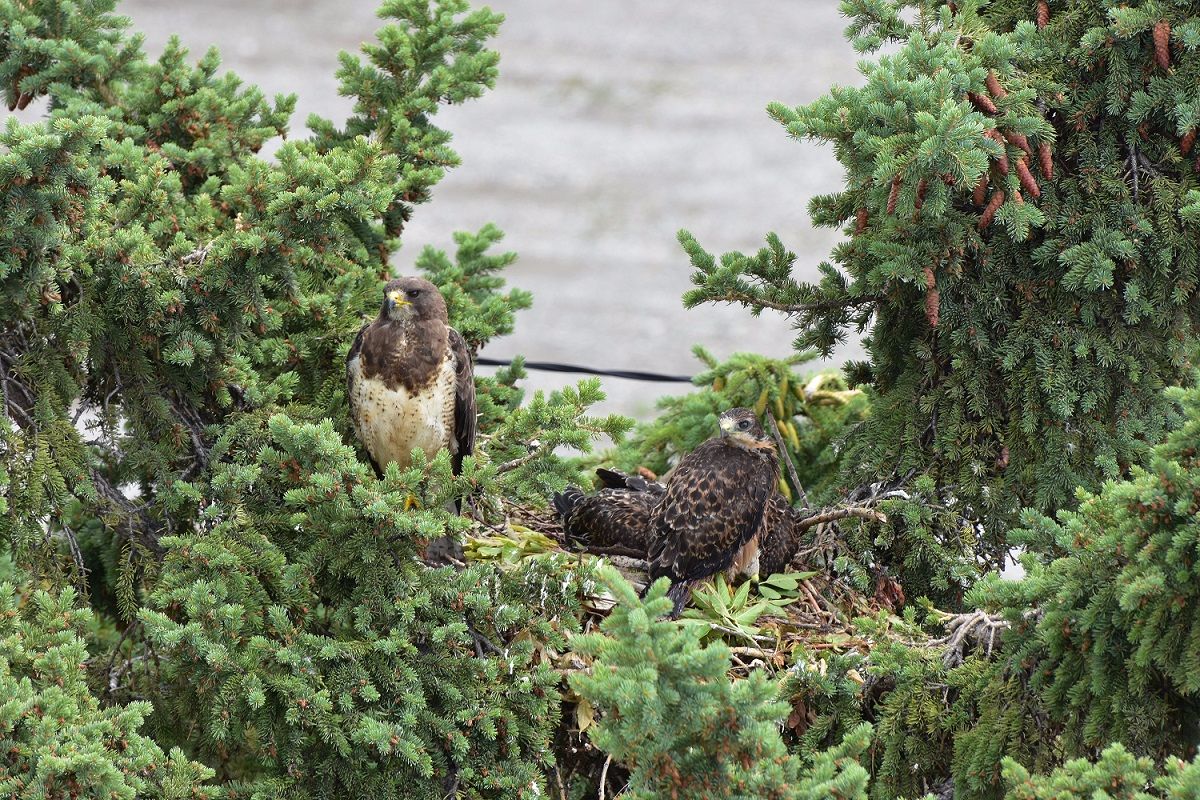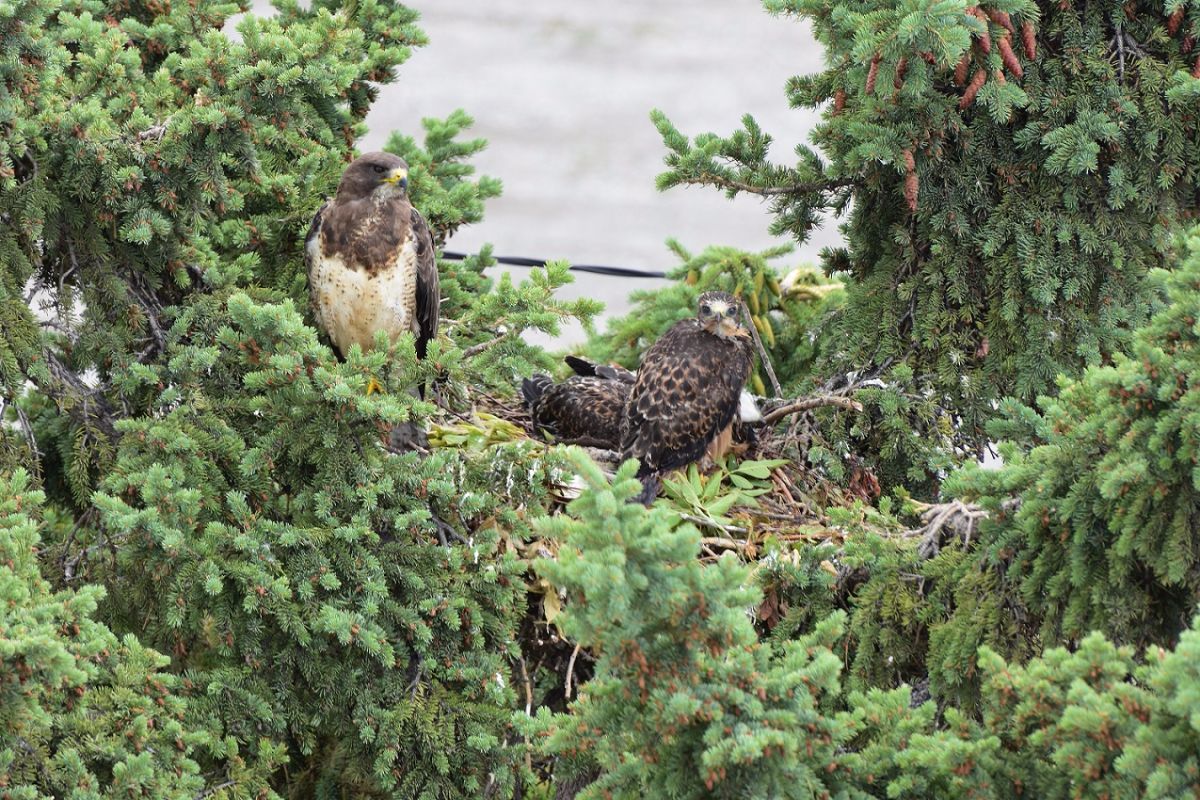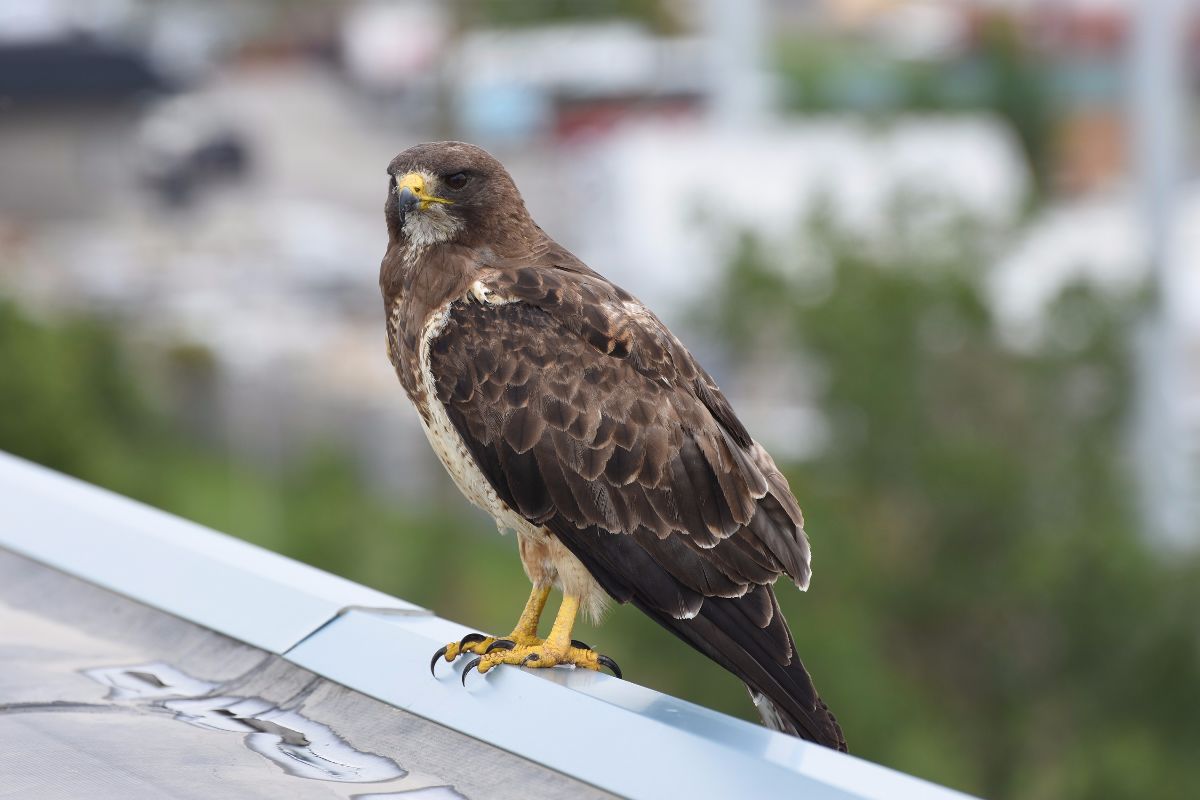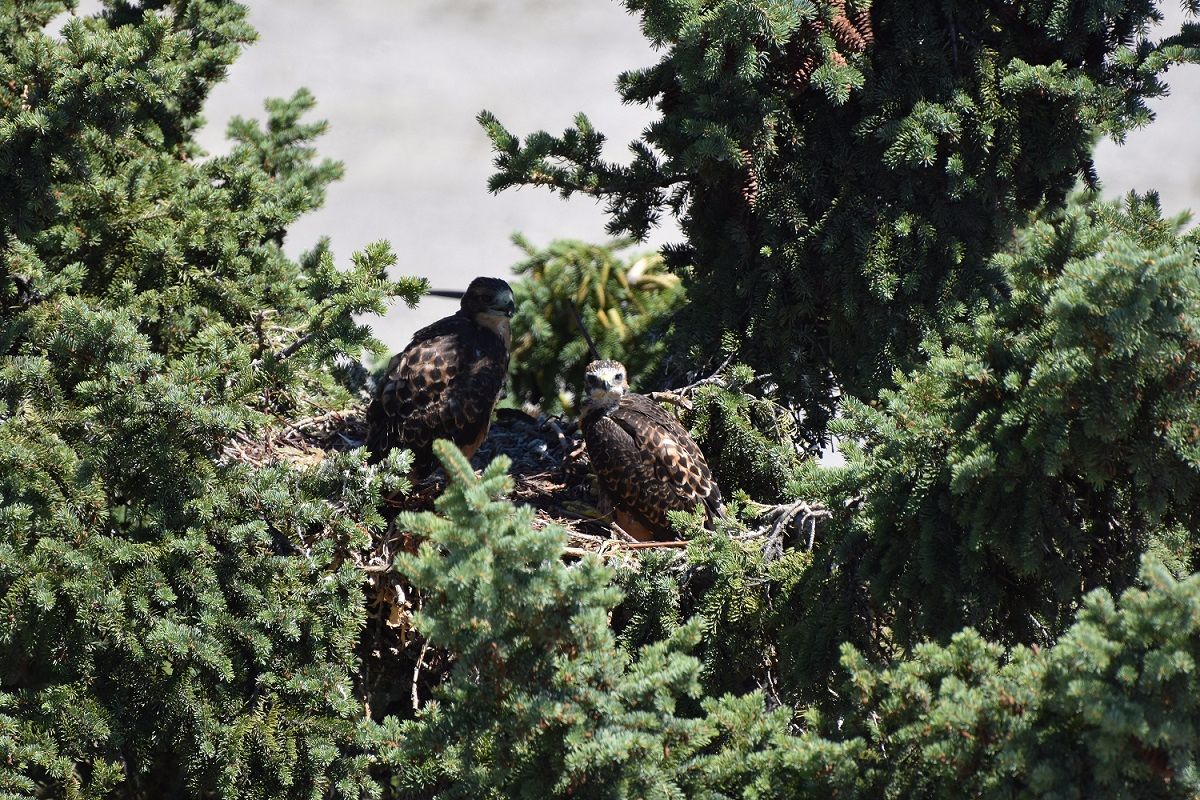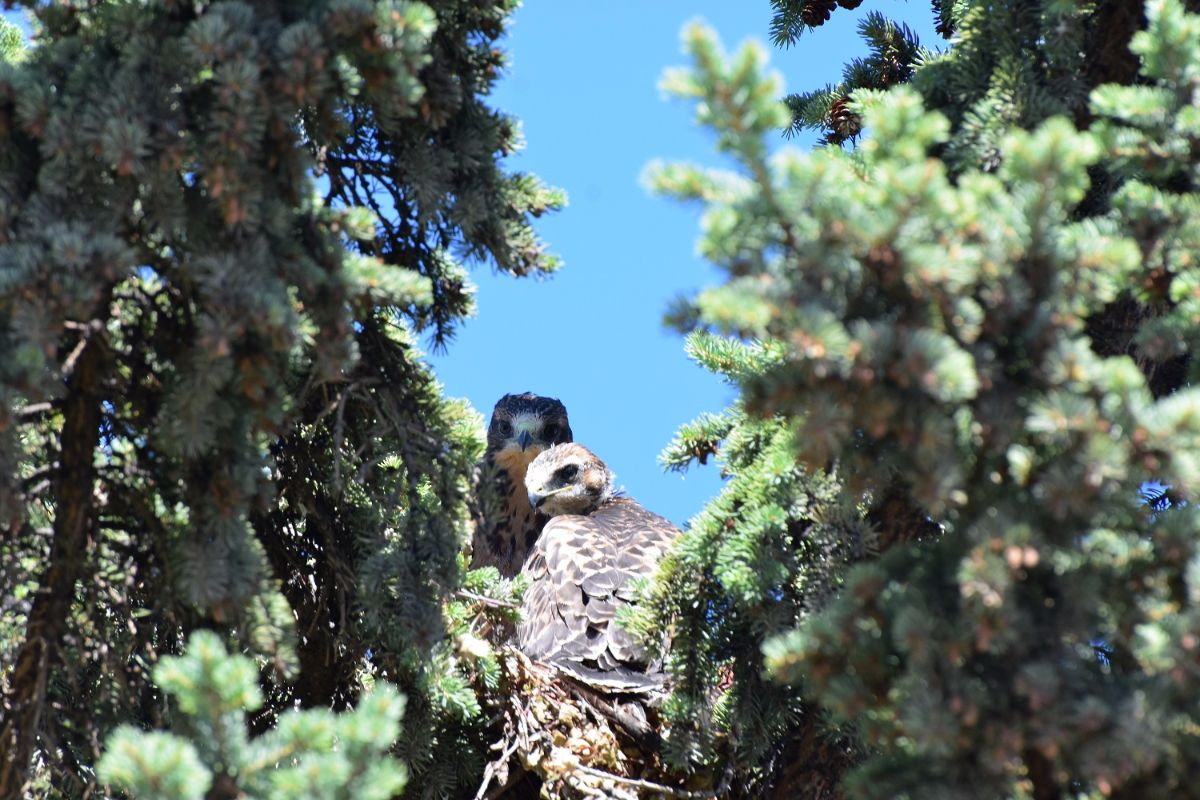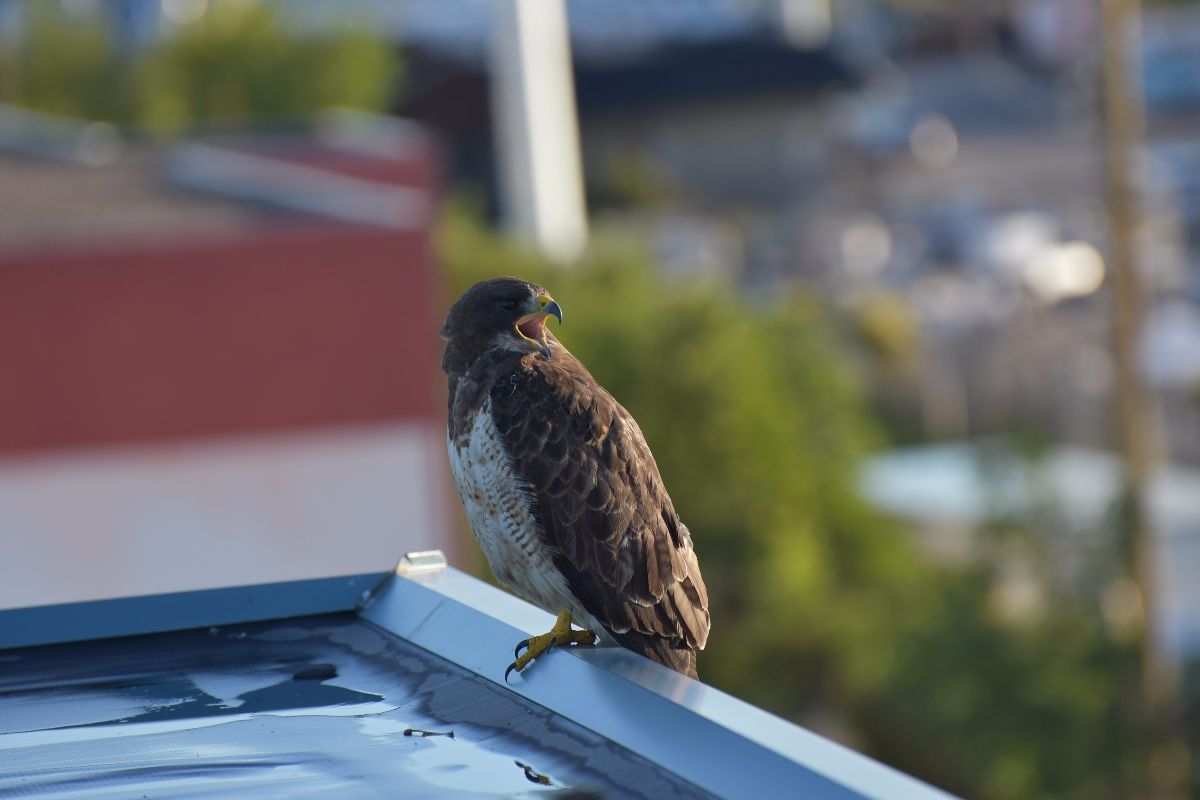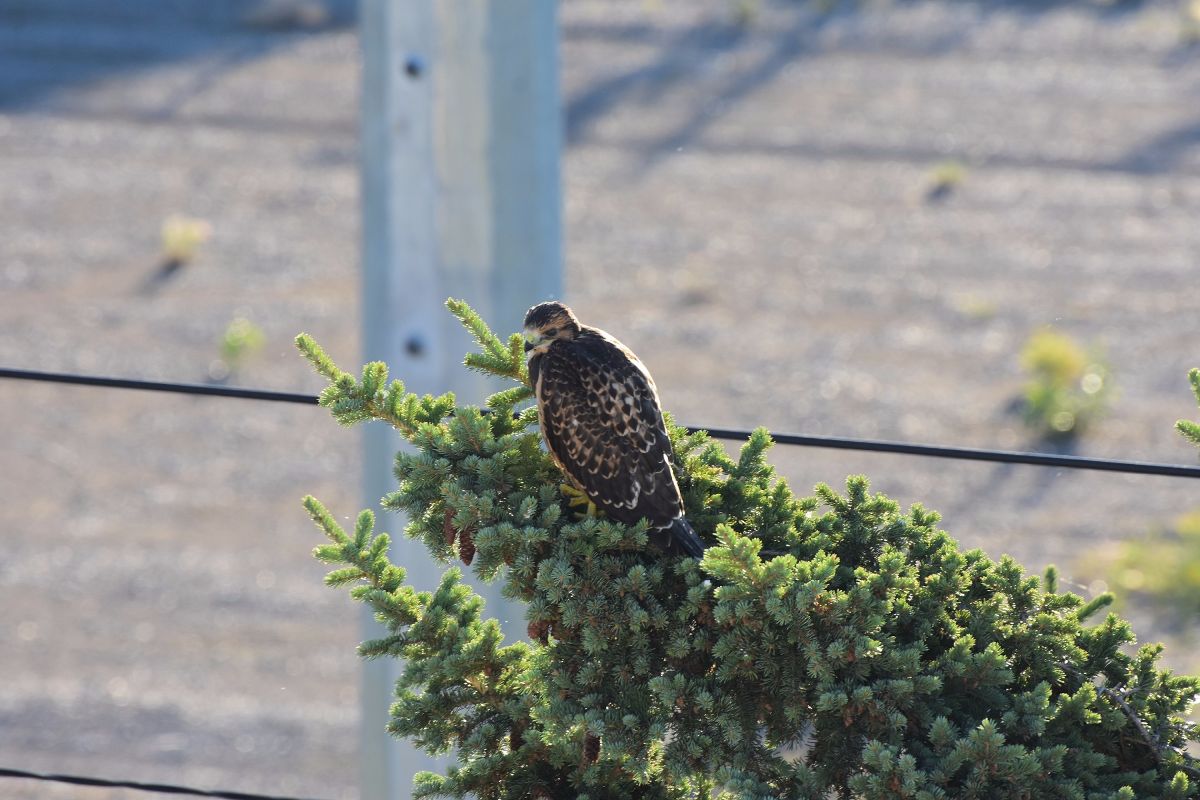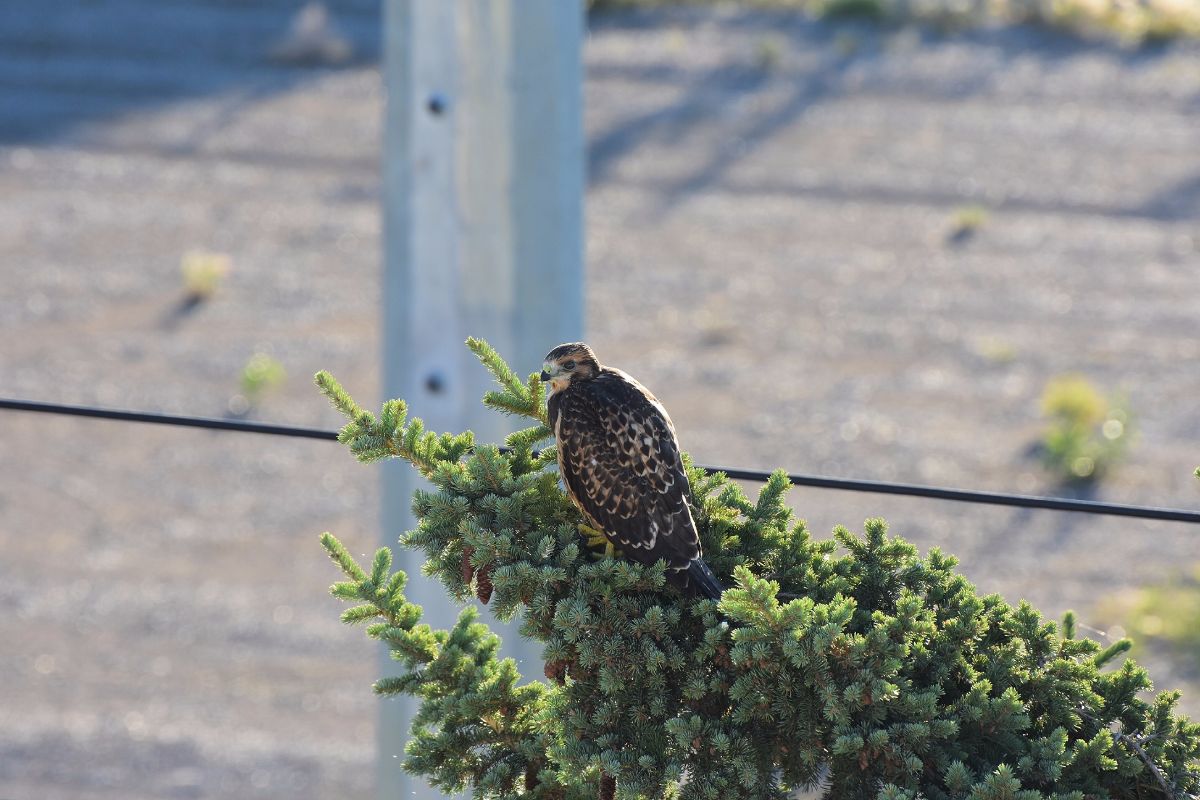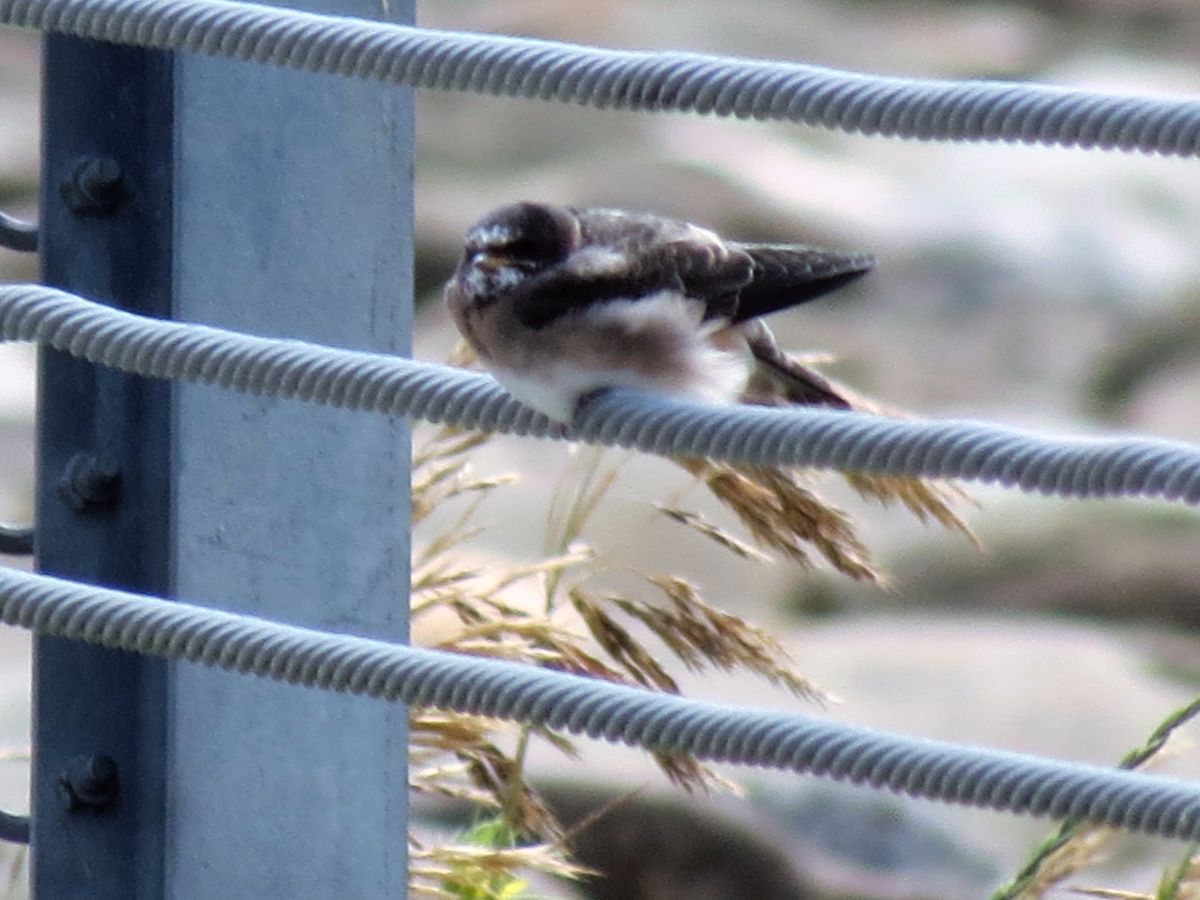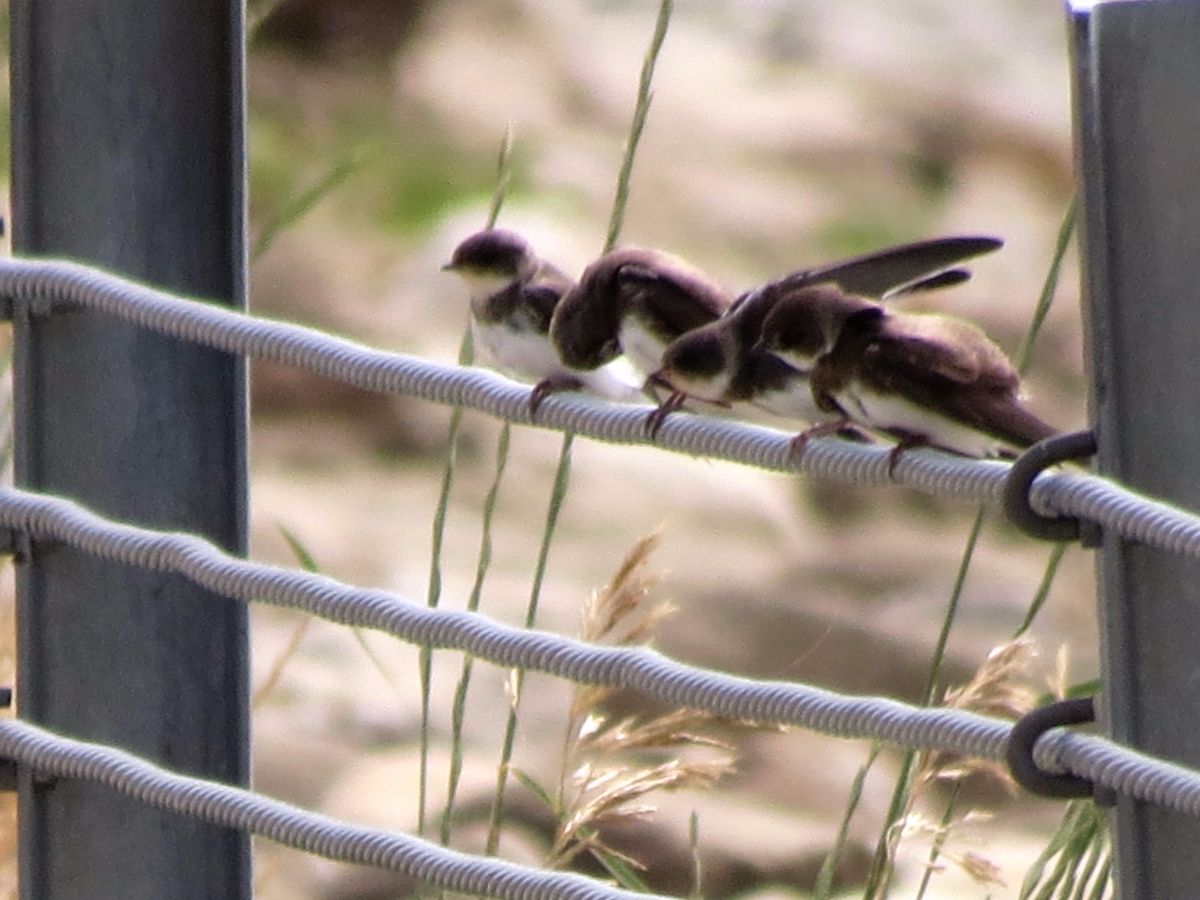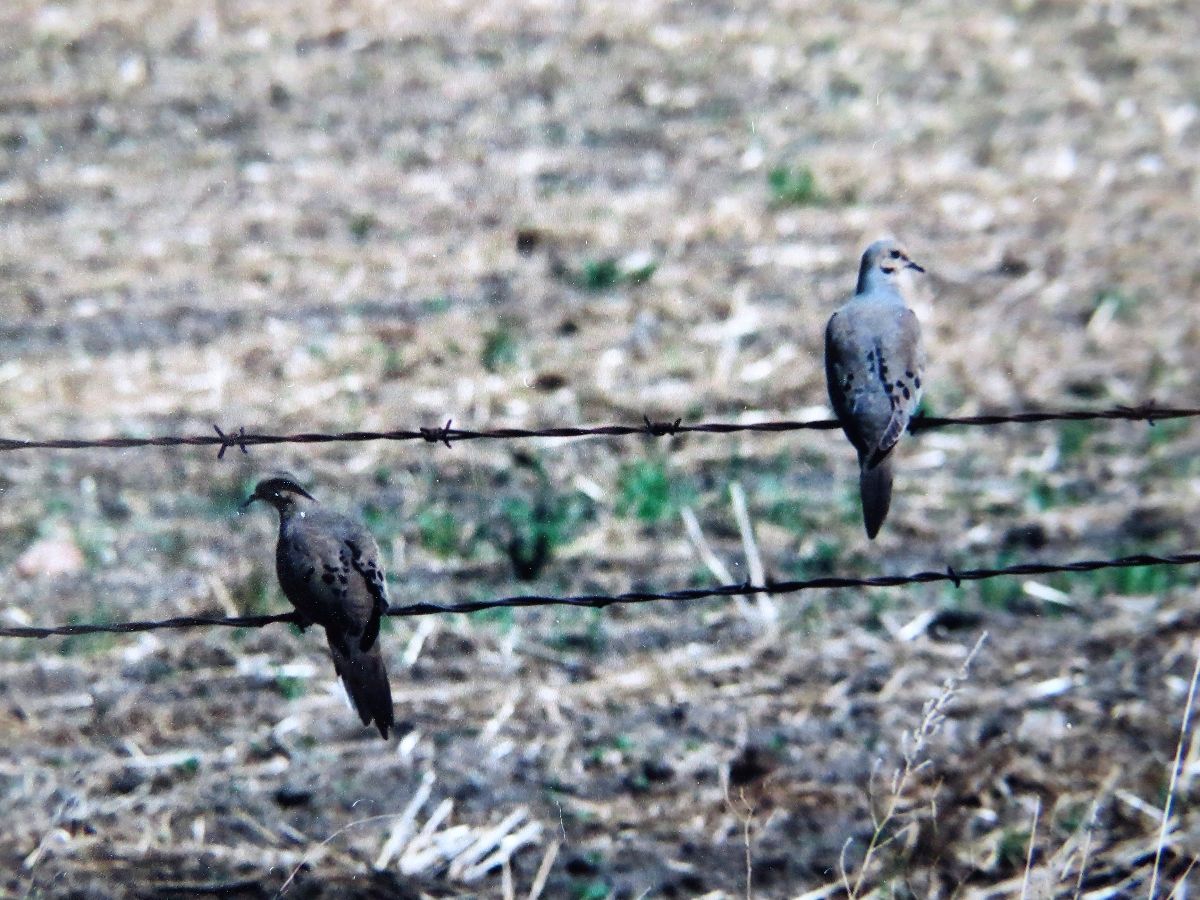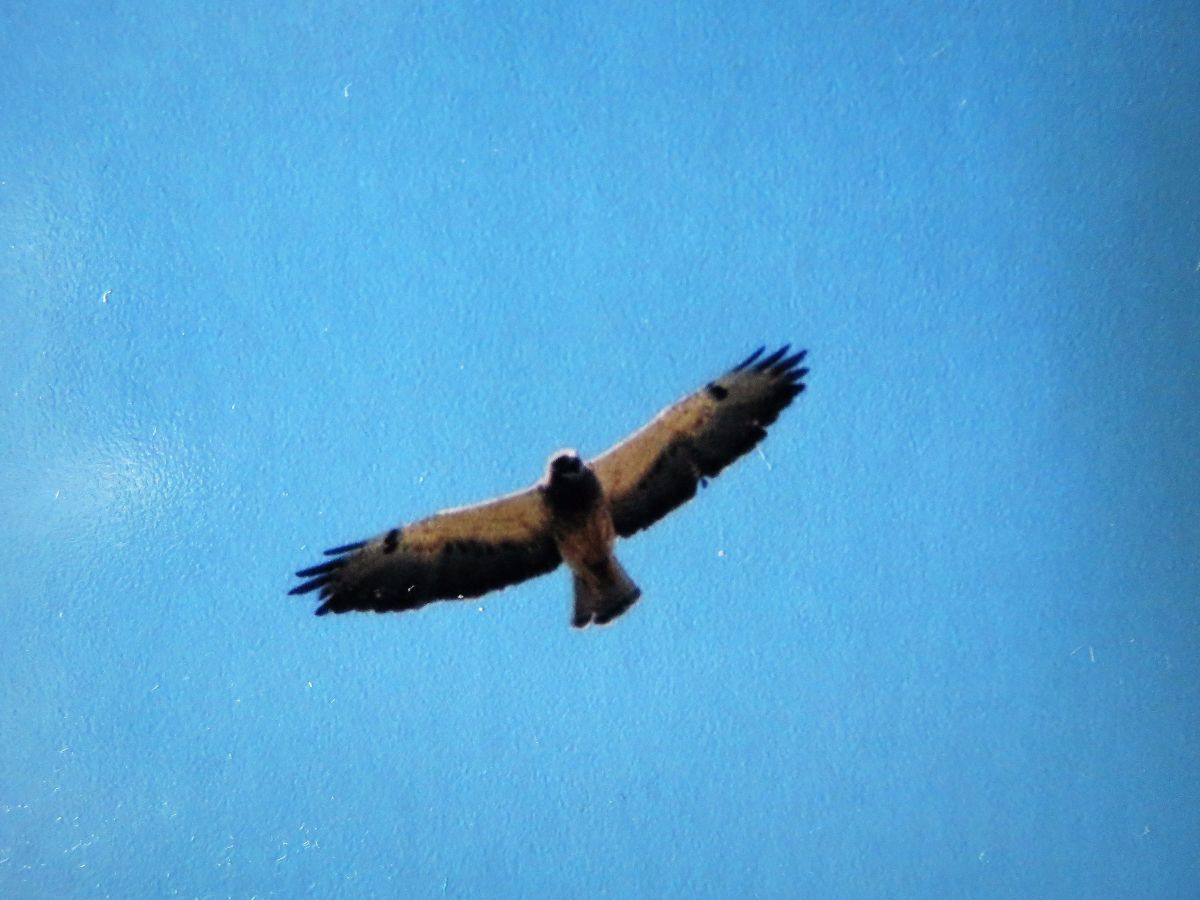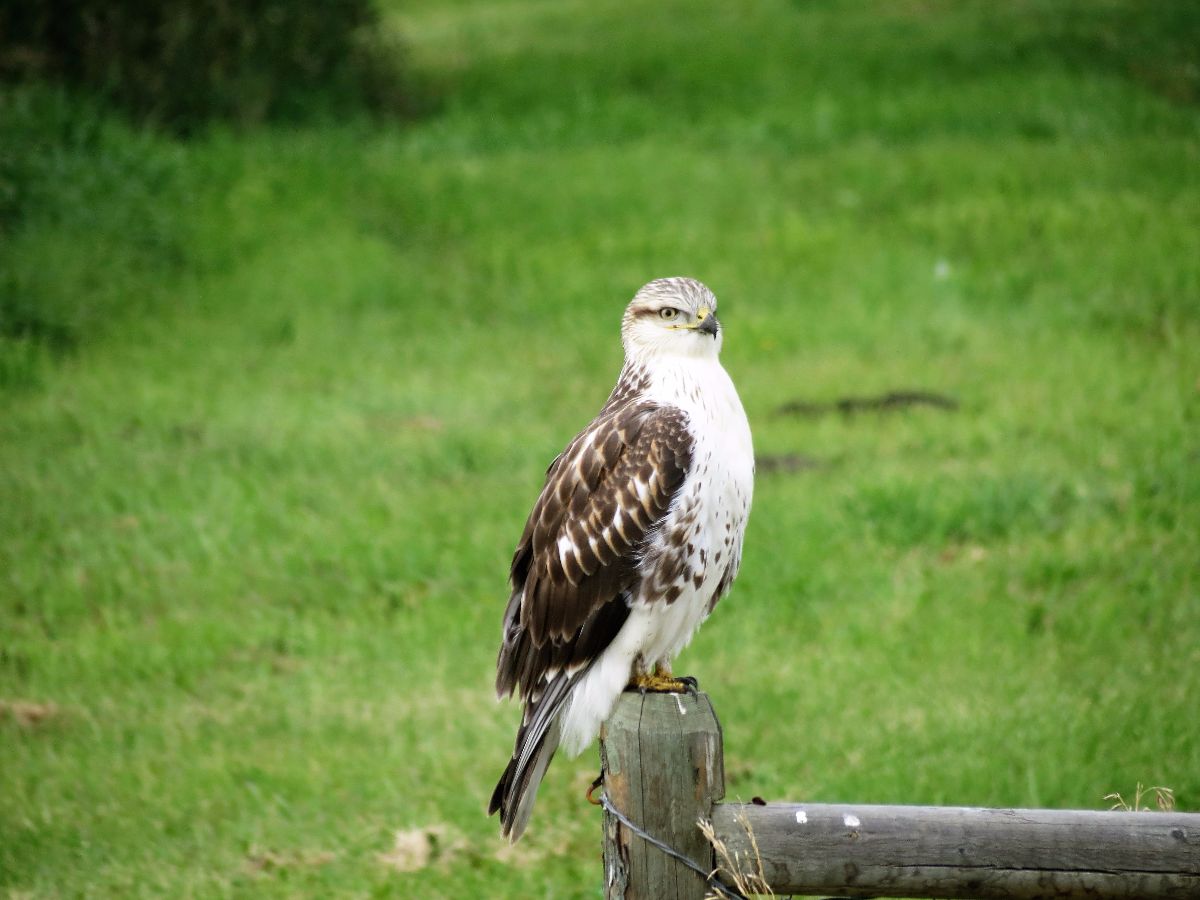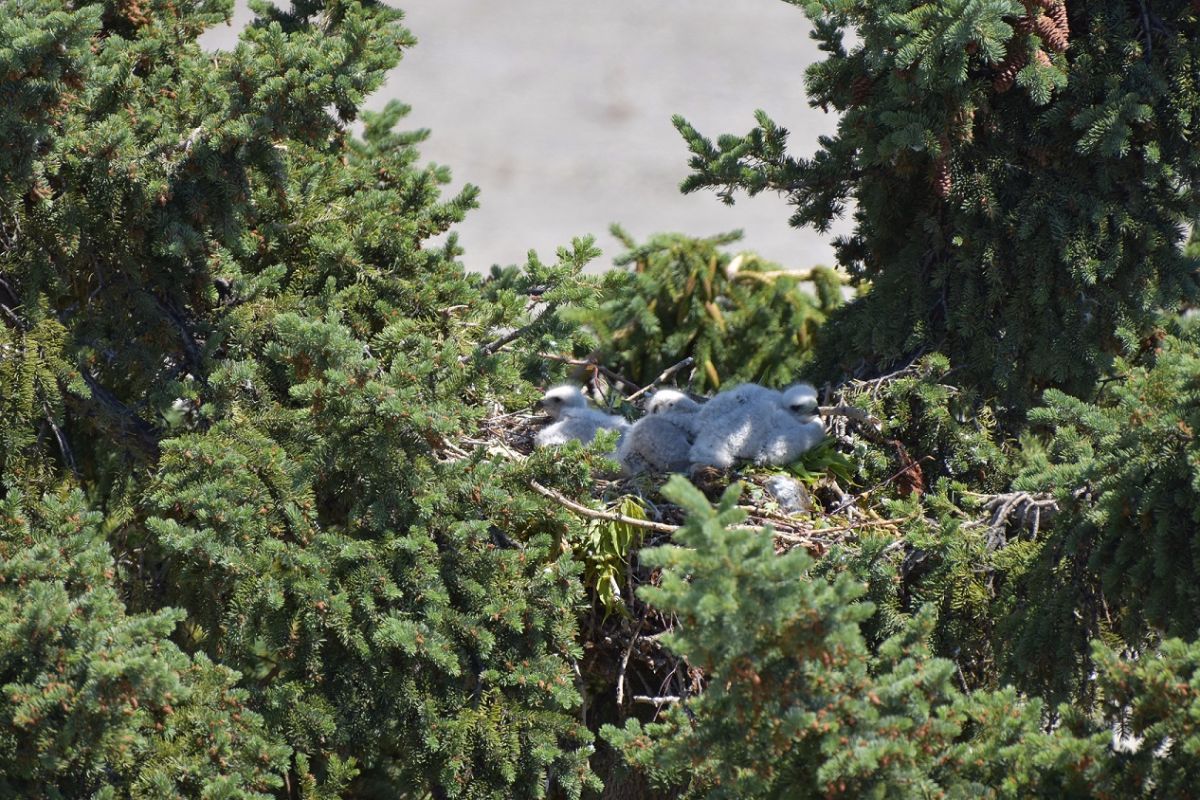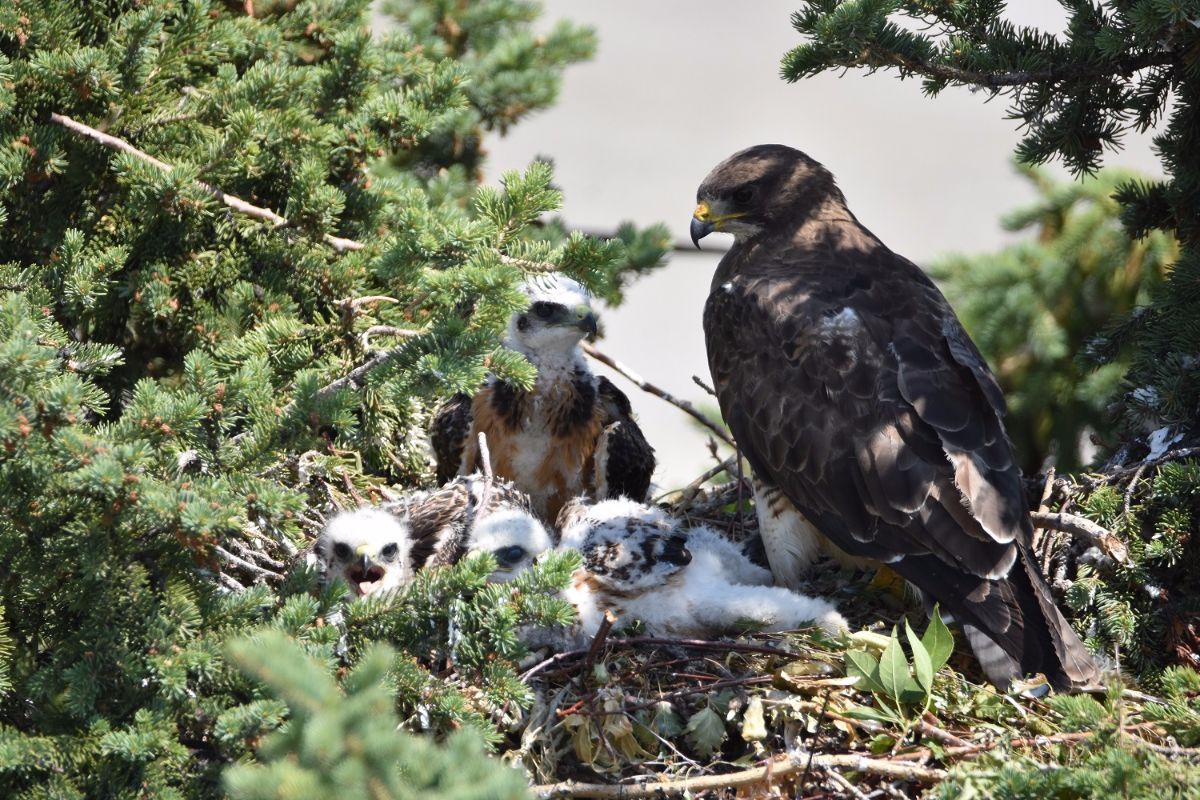By Terry Korolyk
It was April 4, 2006. A woman had phoned in to the Bird Alert a report that she and her husband may have seen a pair of King Eiders on the Bow River in northwest Calgary. This was quite the report considering that in December of last year, 2005, the Province had had only its 2nd, ever occurrence of this species with a juvenile male appearing at Lake Minnewanka in Banff NP. A constant stream of observers, many of them from Calgary (myself amongst them), had made the trip out to the lake to get the bird on their respective lists; life, provincial, or otherwise. The lake was completely frozen except for a long, lonely finger of water stretching out from the north shoreline, and, this was where the bird was along with other laggard waterfowl. Many got to see it, but, eventually, perhaps inevitably, the bird’s remains were found, so, visitors ceased to make the trip to the lake, and, Alberta’s 2nd. ever King Eider had fallen, ignominiously, to a predator unaware of the bird’s stature and place in history.
Was there something going on with this species now that was causing individuals to end up inexplicably in our province? I headed out. When I got to the location given in the directions, it was clear something was amiss. There was a mixup, and, the directions on the river location did not jive with the location in the city. There were no King Eiders here, but, I thought I was supposed to be along the river in the northwest part of Calgary. Actually, I was on the south shore of the Bow River by the 10th. Street Bridge. Anyway, I spotted a dark-appearing Gull resting with other Gulls and birds, mostly waterfowl, on the other side of the river somewhat upstream. That placed it in Centenary Park directly adjacent to the Calgary Zoo parking lot. I couldn’t see it well enough from where I was, so, I decided to take a chance that it wouldn’t leave when I went across the bridge to the other side of the river. A rare Gull would be consolation for not seeing a pair of King Eiders.

A long shot of the Western Gull amidst other Gulls when I first saw it. April 4, 2006.
I was in luck. I had crossed the bridge, parked, and made my way past other people, and, through the open woodland to the shoreline where the birds were resting in the rocks just yards below. It was in this same area where just a few years ago, I had come to get my provincial Northern Cardinal, a female that had taken up a territory in a dense thicket during a cold winter. I remember this winter primarily because it was cold and because of 3 birds; the Cardinal, a Pine Warbler, and, an alternate-plumaged Pacific Loon that was actually at a location that was only slightly downriver. I saw all three.
As I stood on the shoreline, I could feel the grass beneath my feet. I could see the dark-backed Gull amongst all the other birds, but, it was asleep with its head in its back as birds do when they sleep. I waited and walked about trying to make some noise as I moved hoping the bird would move. Was it a Lesser Black-backed; a Slaty-back…………? My thoughts were that it was the former as it was the more common of the two as a rarity. After a short while, the bird moved around, and, the first thing that struck me about it was the size of the bill………………..it was ridiculously long for one thing, looking very bizarre and somewhat comic, but, it was also somewhat bulky. What kind of Gull was this here with such a ridiculous bill. The head was an odd shape from what we’d seen around here looking somewhat like a dome. The bird had a very dumpy build almost like a pot belly. From what I’d seen of the bird so far trying to see as much of it as I could, I was starting to think Western Gull. This would have been a first here in the province I thought. Would I be able to get a look at the legs and feet; they were just about the only things I hadn’t seen yet. I had seen many of these birds on the west coast.

A closeup of the Western Gull.
Eventually, the bird did fly, but, somewhat unexpectedly, so I was only able to get a quick look at the legs which did appear to be flesh-coloured. The bird flew downriver in the direction of the Weir, a known gathering place for Gulls, so, I returned to the car, and roared across the bridge, other people, of course, wondering who this madman was racing through the city. Could they not see what was happening?
I reached the Parking Lot at Pearce Estate (where the Weir was) and hurried out to the observation area, and, sure enough, the bird was on the Weir sleeping. I watched it through the spotting scope for a while, but, it didn’t look like the bird was going to move as it appeared to want to rest with its head in its back again. Perhaps extreme weather conditions, or some other unknown factor or factors had caused it to be here in the first place, so, perhaps, it was imperative that it rest. Fortunately, I had photographed the bird at first back upriver at Centenary Park where I first saw it, so, I was confident I would be able to identify it from the photos.
Two other birders came along, and, I let them know what was going on. The three of us put our Spotting Scopes on the bird, but, it wasn’t being terribly co-operative, not wanting to move. I was hoping it would move, so, I could get a look at the leg colour which I had only a brief look at as the bird flew off towards the Weir from Pearce Estate. At 11:40 A.M., the bird still hadn’t moved and I had to leave, so, I asked my 2 friends to keep watching, as they were obviously staying on, to see if they could get a look at the leg colour. They were able to I found out later, therefore, confirming my belief that the bird was an adult Western Gull.
A shot of the Western Gull on the Weir with other Gulls; California, Ring-billed, and, Herring; there for comparison.
We all returned to the site the next morning, but, the bird was not there, so, we split up. As I was driving across the Cushing Street Bridge, I saw a dark-backed Gull resting on the rocks on the Inglewood Bird Sanctuary side (south) of the river. I’m sure that must have been him (her?) as how many dark-backed Gulls could you have around at one time.
I prepared a report on the bird and started the wheels in motion to send it off to the Alberta Bird Records Committee as, obviously, the bird should be on the Checklist of the birds of Alberta. I was not able to carry things through, and, actually, it wasn’t until March 18 of this year, 2016, that I was able to send the report in. I haven’t heard back from them as yet. In the meantime, though, as I was Compiler at the time for Alberta for the Prairie Provinces Region of North American Birds, I reported the bird, of course, in the Spring report for that year and the photo and discovery details were published in the appropriate issue of the magazine as for a Western Gull.
________________________________________________________
Fall songbird migration is showing good early indications so far. Some excellent reports have come in already with good locations mentioned being Policeman’s Flats just southeast of Calgary, and, Mallard Point in east Fish Creek PP. Policeman’s Flats looks like a regular migrant trap. To access it, go south from Calgary on Highway 2A. Just past the City Limits, you will hit the turnoff on to Dunbow Road going east. Follow Dunbow for a few kilometres to Bow River Bottom Road on the north side of Dunbow Road. Descend the ravine to the Flats. You will pass through some mature woodland on your left and marsh and river to your right. Once past them, the road bends to the right and the road becomes tree and river-lined on your right. You should start seeing birds at this point and it gets better. A field of Saskatoon shrubs is attracting excellent numbers of birds. European Starlings are there in abundance. There were excellent numbers of migrants there on the afternoon of August 3; this included a Western Tanager and a juvenile LeConte’s Sparrow, but, Yellow Warblers and Yellow-rumped and Clay-coloured Sparrows were in good numbers.

Juvenile Leconte’s Sparrow.
But wait!………..it isn’t over yet. The road to its end is lined with Buffaloberry shrubs; a stream; grassland, and, open woodland. And…………..check the grounds of the residence at the end of the road. Then, you get to make the return trip.
The birding was good at Mallard Point August 7 for Nimali Seneviratne. Nimali turned in an excellent checklist with lots of variety including a Ruby-throated Hummingbird (lucky Nimali) and a Ruby-crowned Kinglet and 3 Yellow-rumped Warblers. High water is prevailing at most waterbodies out east, but, this proved a boon to myself August 3. Two thousand American Coots there was surprising, but, also stunning. The best shorebird reports recently have come from Highway 567 east of Airdrie (100+ Red-necked Phalaropes August 6), and, from the large wetland on Inverlake Road near Range Road 275 ( 80 Red-necked Phalaropes August 7).
An oddity recently was a Common Loon on one of the stormwater ponds in Marshall Springs in west Fish Creek PP on August 4. This appears to me to be a small remote urban pond for this species. I would guess the bird was a hatch-year bird.
One of the plusses of birding is finding a rare bird. I was one of the lucky ones August 4 at Mallard Point. Ending a walk there, I came up with a male and female Cassin’s Finch in the willows below the parking lot! This species is native to the southwest corner of the province but is increasing as a vagrant in our area.
Terry Korolyk



